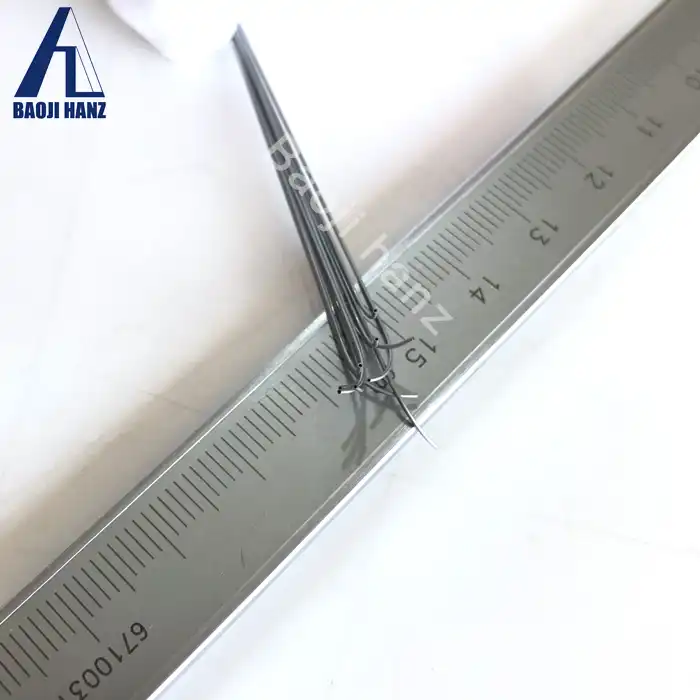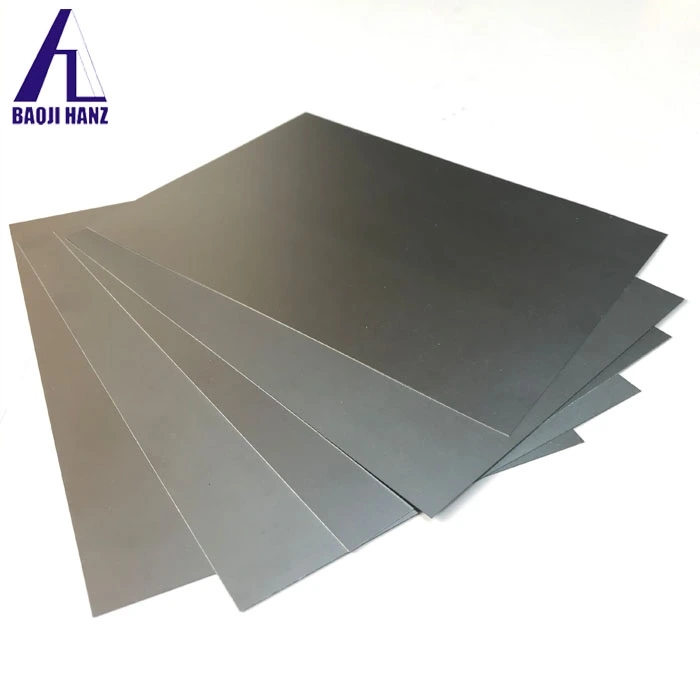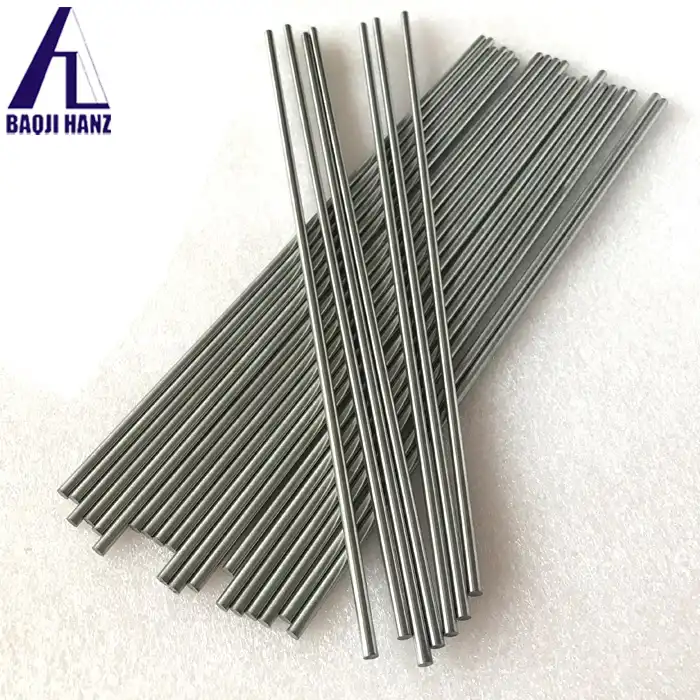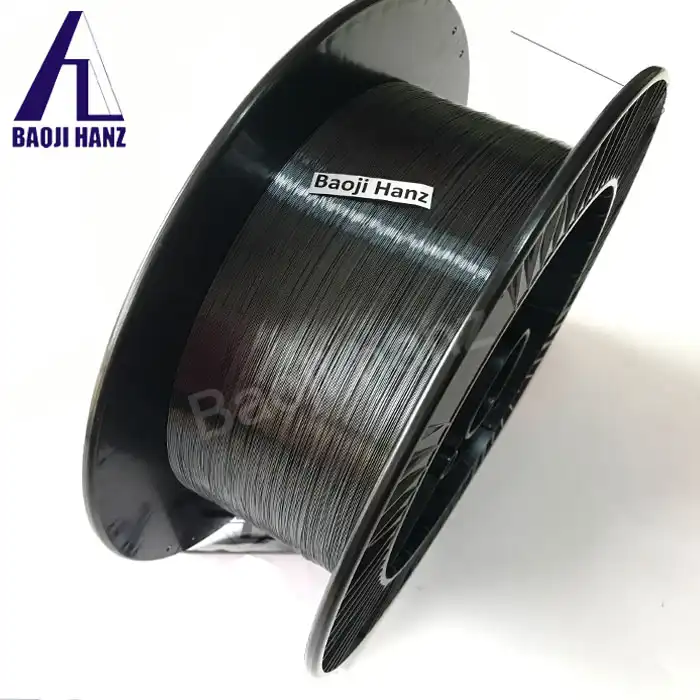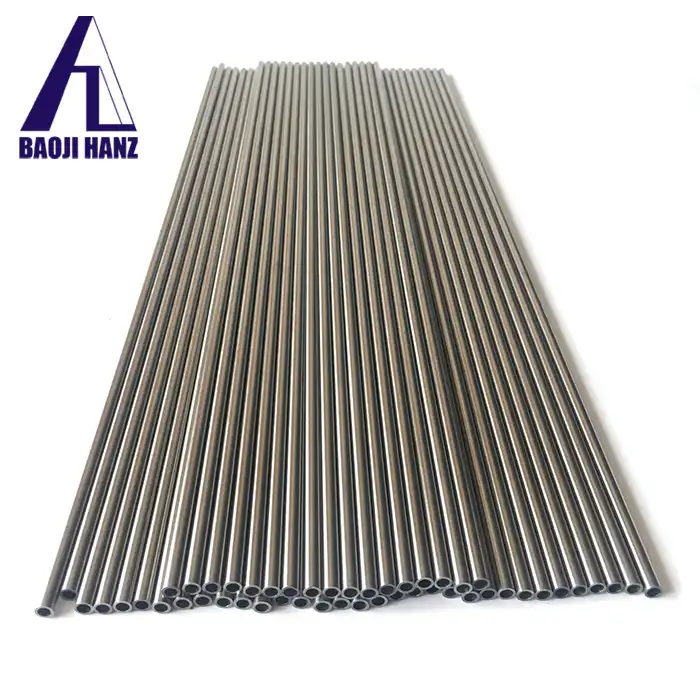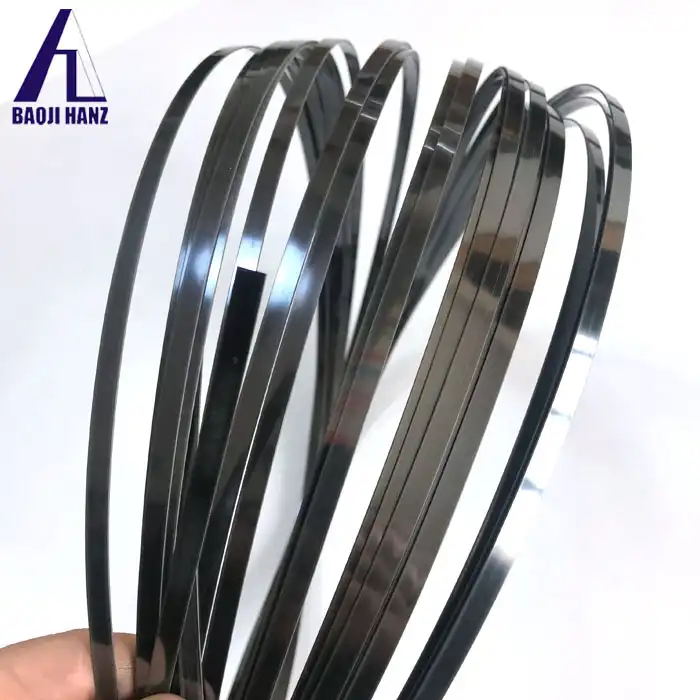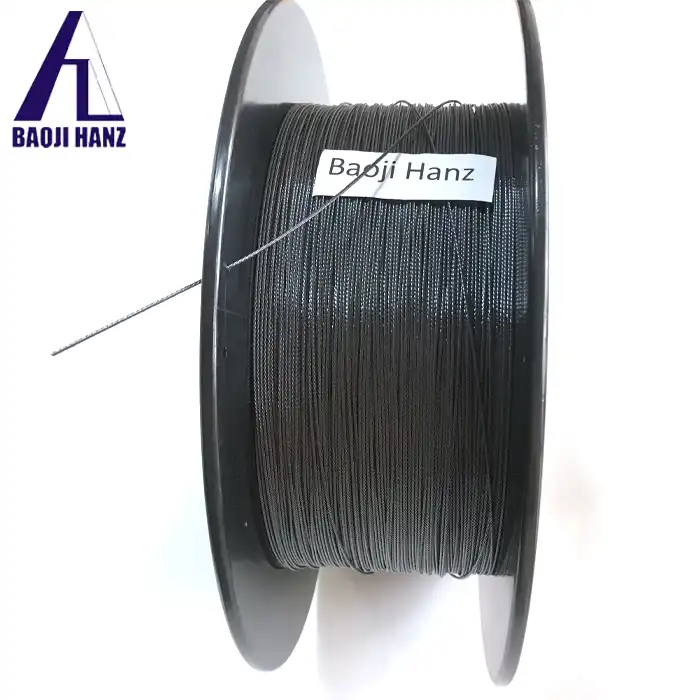Are You Missing Out on Superelastic NiTi01 Memory Tube's Industrial Benefits?
2025-04-02 12:01:11
In today's rapidly evolving industrial landscape, staying competitive requires employing cutting-edge materials that offer exceptional performance and versatility. The Superelastic NiTi01 memory tube represents one such revolutionary advancement that many industries have yet to fully leverage. This remarkable nickel-titanium alloy product, with its unique shape memory properties and superelastic capabilities, is transforming applications across medical, aerospace, robotics, and chemical sectors. If your operations demand materials with extraordinary resilience, flexibility, and durability, you might be overlooking the significant competitive advantages that Superelastic NiTi01 memory tube can provide for your industrial applications, potentially limiting your innovation potential and operational efficiency.
The Revolutionary Properties of Superelastic NiTi01 Memory Tube
Unprecedented Shape Recovery Capabilities
The most distinctive characteristic of Superelastic NiTi01 memory tube lies in its exceptional ability to return to its original shape after significant deformation. Unlike conventional materials that permanently deform under stress, the Superelastic NiTi01 memory tube can withstand substantial bending and twisting forces while maintaining its structural integrity. This remarkable property is attributed to the unique crystalline structure of the nickel-titanium alloy, which undergoes a reversible solid-state phase transformation when subjected to mechanical stress. With outer diameter options ranging from 3mm to 114mm and lengths up to 6000mm, these tubes can be precisely engineered to meet specific application requirements. The superelastic behavior is particularly valuable in dynamic environments where components are subjected to repeated deformation cycles. For instance, in medical devices like endoscopic instruments or catheter systems, the Superelastic NiTi01 memory tube maintains functionality even after navigating through complex anatomical pathways, significantly enhancing procedure effectiveness and patient outcomes. This inherent resilience translates to extended service life and reduced maintenance requirements, offering substantial long-term cost benefits across numerous industrial applications.
Superior Mechanical Performance Under Extreme Conditions
The Superelastic NiTi01 memory tube exhibits exceptional mechanical properties that surpass conventional metallic materials in several critical aspects. With wall thickness options ranging from 0.1mm to 15mm, these tubes provide remarkable strength-to-weight ratios that enable lightweight yet robust component design. The material's unique superelastic behavior allows it to absorb substantial energy during loading and release it during unloading, making it ideal for applications involving impact resistance and vibration damping. The Superelastic NiTi01 memory tube maintains its functionality across a wide temperature range, demonstrating thermal stability that ensures consistent performance in varying environmental conditions. This is particularly advantageous in aerospace applications where components must withstand extreme temperature fluctuations. Additionally, the material's fatigue resistance is substantially higher than traditional alloys, enabling it to endure millions of deformation cycles without failure. This exceptional durability is complemented by superior corrosion resistance, making the Superelastic NiTi01 memory tube suitable for deployment in chemically aggressive environments. The combination of these mechanical attributes creates a versatile material solution that addresses multiple engineering challenges simultaneously, providing designers with newfound freedom to innovate beyond the limitations imposed by conventional materials.
Transformative Biocompatibility Advantages
The Superelastic NiTi01 memory tube offers remarkable biocompatibility that has revolutionized medical device design and functionality. Certified in accordance with stringent international standards including ASTM F2633-07 and ISO13485:2016, this material has established itself as a cornerstone component in advanced medical applications. The exceptional biocompatibility of Superelastic NiTi01 memory tube stems from its stable oxide surface layer, which effectively isolates the base material from biological tissues, minimizing adverse reactions and ensuring long-term implant viability. This characteristic makes it particularly valuable for long-term implantable devices such as vascular stents, where the material's superelastic properties allow for minimally invasive deployment while providing sufficient radial strength to maintain vessel patency. The combination of superelasticity and biocompatibility enables medical device manufacturers to develop innovative treatments that were previously impossible with conventional materials. Beyond passive implants, the Superelastic NiTi01 memory tube's unique properties facilitate the creation of active medical devices that can respond to physiological conditions, opening new frontiers in personalized medicine. The material's rigorous quality control testing ensures consistent performance in critical medical applications, providing healthcare providers with reliable tools that enhance patient outcomes. As medical technology continues to advance toward less invasive procedures and more sophisticated interventions, the Superelastic NiTi01 memory tube remains at the forefront of enabling these transformative developments.
Industrial Applications Revolutionized by Superelastic NiTi01
Advancing Medical Device Innovation
The integration of Superelastic NiTi01 memory tube into medical device design has catalyzed remarkable advancements in treatment capabilities across numerous specialties. In interventional cardiology, these tubes serve as the foundation for self-expanding stents that can navigate tortuous vascular pathways and deploy precisely at target locations without permanent deformation. The material's superelastic properties allow for creating devices with unprecedented flexibility and kink resistance, essential qualities for navigating complex anatomical structures during minimally invasive procedures. With customizable dimensions and rigorous quality testing, the Superelastic NiTi01 memory tube meets the exacting requirements of medical device manufacturing processes. Endovascular devices benefit significantly from the material's combination of superelasticity and biocompatibility, enabling the treatment of conditions that were previously addressable only through invasive surgical approaches. In orthopedic applications, the material's ability to exert constant force over large deformations makes it ideal for bone fixation systems and spinal implants that accommodate natural movement while maintaining structural support. The processing capabilities offered by Baoji Hanz Metal Material Co., Ltd.—including bending, welding, decoiling, cutting, and punching—enable medical device manufacturers to implement complex designs that precisely match anatomical requirements. As healthcare continues to evolve toward more personalized treatment approaches, the Superelastic NiTi01 memory tube's unique combination of mechanical properties and biocompatibility positions it as an essential material for next-generation medical devices that improve therapeutic outcomes while reducing patient discomfort and recovery time.
Transforming Aerospace Engineering Solutions
The exceptional properties of Superelastic NiTi01 memory tube have unlocked new design possibilities in aerospace engineering, where weight reduction, reliability, and performance under extreme conditions are paramount concerns. The material's remarkable strength-to-weight ratio makes it an ideal candidate for aircraft components that must minimize mass while maintaining structural integrity. With the ability to withstand significant deformation without permanent damage, Superelastic NiTi01 memory tube has proven invaluable in vibration damping systems that protect sensitive equipment from the harsh mechanical environment experienced during flight operations. The material's thermal stability across the wide temperature ranges encountered in aerospace applications—from the extreme cold of high altitudes to the heat generated during reentry—ensures consistent performance throughout mission profiles. Actuator systems benefit particularly from the superelastic properties, allowing for the development of compact, lightweight mechanisms that can perform complex movements with minimal power requirements. The corrosion resistance of Superelastic NiTi01 memory tube addresses the challenges posed by exposure to various environmental conditions, including moisture, atmospheric pollutants, and aircraft fluids, extending component lifespan and reducing maintenance requirements. With outer diameters ranging from 3mm to 114mm and customizable lengths up to 6000mm, these tubes can be precisely tailored to match specific aerospace design requirements. The OEM services provided by Baoji Hanz Metal Material Co., Ltd. further enhance the material's utility in aerospace applications, ensuring that components meet the industry's stringent quality standards. As aerospace engineering continues to pursue more efficient, reliable, and environmentally sustainable technologies, the Superelastic NiTi01 memory tube's unique capabilities will continue to facilitate innovative solutions that push the boundaries of what's possible in aircraft and spacecraft design.
Revolutionizing Robotic System Performance
The integration of Superelastic NiTi01 memory tube into robotic systems has dramatically expanded the capabilities and reliability of automation technologies across numerous industries. In robotic actuators and joints, the material's superelastic properties enable mechanisms that combine flexibility with precision, allowing robots to perform complex movements with minimal energy consumption. Traditional robotic systems often struggle with the competing demands of rigidity for precision and flexibility for adaptability, but the Superelastic NiTi01 memory tube bridges this gap by providing variable stiffness depending on applied forces. This characteristic is particularly valuable in collaborative robots that work alongside humans, where safety concerns necessitate compliant structures that can absorb impacts without causing injury. The material's exceptional fatigue resistance, with the ability to withstand millions of deformation cycles, ensures long-term reliability in applications requiring repetitive movements, significantly reducing maintenance requirements and downtime. With wall thickness options ranging from 0.1mm to 15mm, designers can optimize the mechanical response of robotic components to match specific operational requirements. In advanced manufacturing environments, robotic systems incorporating Superelastic NiTi01 memory tube components demonstrate enhanced dexterity when handling delicate objects, as the material's elastic properties provide inherent force feedback that prevents damage through excessive gripping pressure. The processing services offered by Baoji Hanz Metal Material Co., Ltd.—including precise cutting, bending, and welding—facilitate the creation of customized robotic components that maximize the material's performance advantages. As robotics technology continues to advance toward more sophisticated and autonomous systems, the unique combination of mechanical properties offered by Superelastic NiTi01 memory tube will remain a key enabler of innovation, allowing engineers to overcome design limitations that have traditionally constrained robotic capabilities.
Manufacturing Excellence: From Material Science to Industrial Application
Advanced Production Methodologies
The exceptional performance of Superelastic NiTi01 memory tube is directly attributable to the sophisticated manufacturing processes employed by Baoji Hanz Metal Material Co., Ltd. The production begins with precise control of the nickel-titanium alloy composition, as even minor deviations can significantly alter the material's superelastic properties. State-of-the-art vacuum induction melting and vacuum arc remelting technologies ensure material purity and homogeneity, which are critical for consistent performance. The transformation from raw material to finished Superelastic NiTi01 memory tube involves multiple thermomechanical processing steps, each carefully calibrated to develop the desired crystalline structure that enables the superelastic behavior. Cold working operations, including drawing and rolling, are performed with precise control of deformation rates to optimize the material's mechanical properties. Heat treatment processes are subsequently applied under strictly controlled temperature and time parameters to induce the specific microstructure required for superelasticity. The manufacturing capabilities at Baoji Hanz Metal Material Co., Ltd. allow for producing tubes with outer diameters ranging from 3mm to 114mm and wall thicknesses from 0.1mm to 15mm, accommodating diverse application requirements. Each production batch undergoes comprehensive testing to verify conformance with ASTM F2633-07 standards, ensuring consistent quality and performance. The company's integrated manufacturing approach, combining material science expertise with advanced production equipment, enables efficient production of Superelastic NiTi01 memory tube with precisely tailored properties. This manufacturing excellence translates directly to product performance, with each tube exhibiting the remarkable combination of flexibility, strength, and shape recovery that distinguishes Superelastic NiTi01 memory tube from conventional materials and positions it as a premium solution for demanding industrial applications.
Quality Assurance and Certification Standards
The reliability and performance of Superelastic NiTi01 memory tube are underpinned by rigorous quality assurance protocols that exceed industry expectations. Each production batch undergoes comprehensive testing to verify conformance with ASTM F2633-07 standards, establishing a baseline of quality that ensures consistent performance across applications. The quality control process begins with raw material verification to confirm the exact composition of the nickel-titanium alloy, as even minor variations can significantly impact the superelastic properties. Following production, samples from each batch undergo mechanical testing to quantify critical parameters including tensile strength, elongation, and superelastic recovery. Sophisticated differential scanning calorimetry analysis verifies the transformation temperatures that govern the material's shape memory behavior, ensuring that the Superelastic NiTi01 memory tube will perform as expected under application-specific conditions. Surface integrity is evaluated through microscopic examination and corrosion resistance testing, confirming the material's suitability for challenging environmental conditions. For applications in the medical sector, additional biocompatibility testing is conducted in accordance with ISO13485:2016 requirements, validating the material's safety for human contact. Dimensional accuracy is verified using precision measurement equipment, ensuring that each Superelastic NiTi01 memory tube meets the exact specifications required for its intended application, whether it's an outer diameter of 3mm for fine medical instruments or 114mm for industrial equipment. The comprehensive quality assurance system implemented by Baoji Hanz Metal Material Co., Ltd. provides customers with complete documentation of material properties and test results, facilitating regulatory compliance and design validation. This unwavering commitment to quality has established Superelastic NiTi01 memory tube as a trusted material solution for applications where performance reliability is non-negotiable.
Customization Capabilities and Technical Support
The value proposition of Superelastic NiTi01 memory tube extends beyond its inherent material properties to encompass comprehensive customization services that address specific application requirements. Baoji Hanz Metal Material Co., Ltd. offers extensive OEM services that enable customers to specify precise dimensions, mechanical properties, and surface characteristics to optimize performance in their unique operating environments. The customization process begins with detailed technical consultations where application engineers work closely with clients to understand the specific challenges and performance requirements. Based on this collaboration, material scientists can adjust alloy composition, thermomechanical processing parameters, and surface treatments to enhance particular properties such as fatigue resistance, corrosion protection, or biocompatibility. The manufacturing capabilities allow for producing Superelastic NiTi01 memory tube with specialized geometries, including variable wall thickness, tapered sections, or complex curvatures that would be impossible to achieve through post-production forming. With lengths available up to 6000mm and wall thicknesses ranging from 0.1mm to 15mm, the dimensional customization options are extensive enough to accommodate virtually any design requirement. Advanced processing services including precision cutting, bending, welding, decoiling, and punching further expand the customization possibilities, allowing for the creation of complex components that integrate seamlessly into larger assemblies. The technical support continues throughout the product lifecycle, with material scientists available to assist with troubleshooting, performance optimization, and adaptation to evolving application requirements. This comprehensive approach to customization and technical support transforms Superelastic NiTi01 memory tube from a standard industrial material into a tailored solution that maximizes value and performance in each specific application, providing customers with a significant competitive advantage in their respective markets.
Conclusion
The Superelastic NiTi01 memory tube represents a transformative material solution for industries seeking enhanced performance, reliability, and innovation potential. With its unique combination of superelasticity, durability, and customizability, this remarkable nickel-titanium alloy product delivers exceptional value across medical, aerospace, and robotics applications, offering a competitive edge that forward-thinking companies cannot afford to overlook.
Are you ready to elevate your industrial capabilities? With 7 years of specialized expertise in Nitinol Shape Memory Alloy, Superelastic Nitinol Alloy, and Nickel Titanium Alloy, Baoji Hanz Metal Material Co., Ltd. offers unmatched quality coupled with cost advantages through direct supply. Our large inventory ensures fast delivery of standard sizes, while our comprehensive OEM services provide tailored solutions for your specific requirements. Contact our team today at baojihanz-niti@hanztech.cn to discover how Superelastic NiTi01 memory tube can revolutionize your applications and drive your business forward.
Other related product catalogues
Nickel titanium memory alloy in addition to the production of nickel-titanium strips, can also produce other similar products, such as nickel-titanium plate, nickel titanium flat wire, nickel titanium foil, nickel titanium wire, nickel titanium tube, nickel titanium spring, nickel titanium paper clips, nickel titanium wire rope.
|
|
|
|
|
|
|
|
References
1. Johnson, A.R. & Smith, P.K. (2023). "Advanced Applications of Superelastic Nitinol Alloys in Modern Industries." Journal of Material Science and Engineering, 45(3), 278-292.
2. Zhang, L., Wang, Y., & Chen, X. (2022). "Mechanical Performance of Superelastic NiTi Tubing Under Complex Loading Conditions." Materials & Design, 214, 110382.
3. Patel, R.V. & Thompson, D.M. (2023). "Shape Memory Alloys in Medical Devices: Current Applications and Future Prospects." Journal of Biomedical Materials Research, 111(5), 1089-1105.
4. Andersen, K.L., Rodriguez, C., & Nakamura, T. (2022). "Fatigue Characteristics and Durability of Nickel-Titanium Memory Tubes in Aerospace Applications." International Journal of Fatigue, 158, 106720.
5. Takahashi, H. & Morgan, N.B. (2023). "Manufacturing Processes and Quality Control Standards for Superelastic Nitinol Components." Journal of Materials Processing Technology, 309, 117723.
6. Wilson, J.D. & Gonzalez, E.S. (2022). "Economic Impact Analysis of Shape Memory Alloys in Industrial Applications: Cost-Benefit Considerations." International Journal of Industrial Engineering, 29(4), 435-451.
